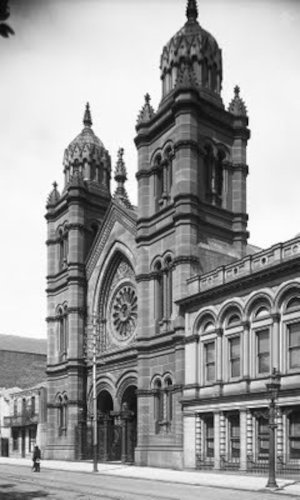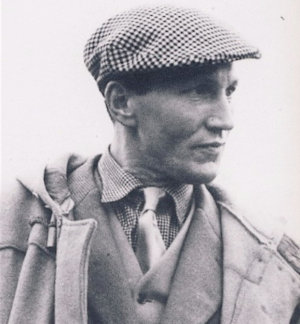An article by Dr Esther Shkop, published on Aish.com on November 29, 2022
Much has been made of male dominance in Judaism which, it is argued, is rooted in the biblical and liturgical conception of God in masculine images. Indeed, when Jewish sources wish to represent God as the ultimate force, that power is represented in the metaphor of Gibor (Hero) and Ish Milchamah (Man of War). When the representation is meant to indicate that God is the source of righteous judgment, He is depicted as a Shofet, the masculine word for judge; when as a benign yet stern father, God is described as Avinu sh'ba'Shamayim, our Father in Heaven. These images are undoubtedly masculine. And they are meant to be.
However, in essence, God is neither feminine nor masculine. God's essence is indescribable in any human terms, as Maimonides' fourth principle of faith states: The Creator... is not physical and is not affected by physical phenomena (Commentary to the Mishnah, Sanhedrin, ch. 10). The descriptive references, then, are for our benefit, to allow us to relate to the Divine. Undoubtedly women can and should relate to God as envisaged in masculine imagery.
However, if the imagery used in Judaic texts were solely masculine, one might be led to believe that there is a uniquely masculine approach to Judaism's conception of God. Judaic theology would thus foster a closer affinity with the world of men than that of women. Indeed, some contemporary women feel disconnected from their heritage, convinced that it simply does not speak to them as women.
In truth, masculine imagery represents only one portion of references to God in Jewish texts. The Tanakh (the five books of the Bible and the Prophets and Writings) is, in fact, replete with feminine imagery.
Only later does the Bible describe the separation of the male and female in the formation of Adam and Eve. Henceforth, the Divine image is as intrinsic in the woman as it is in the man, and, indeed, in the absence of either man or woman, there is no complete image of God.
When describing the unconditional love that cannot and will not be extinguished by betrayal and abandonment, Moses evokes the image of maternal compassion with the description of God as El Rachum, "the Merciful God, Who will not fail you, nor destroy you" (Deuteronomy 4:31). The great 19th-century commentator Rabbi Samson Raphael Hirsch illuminated the fact that the concept of rachum, mercy, is rooted in the noun rechem, which means womb. The Jewish conception of compassion and love is grounded in the essentially feminine image of the womb, which holds, nurtures, and protects the fetus -- be it perfect or malformed, pretty or ugly, worthy or undeserving.
➤Related Article: The Gender of God
Maternal ImageryInspired by the words of the Torah, the prophet Isaiah adds more drama and depth to the maternal imagery. He renders God as the loving Mother of Israel who can never forget the child She bore and suckled, who then asks incredulously,
"Can a woman forget her babe, cease loving the son of her belly? Indeed, these may forget, but I will never forget you." (Isaiah 49:15)
In a similar vein, Isaiah presents God as the Source of life and peace. With a descriptive personification of a nursing mother, he portrays the great metaphor of Gods comfort:
"I stretch out to her like a river of peace, like a stream flowing with the honor of the nations, and you may suckle. You will be carried on the side and played with on the knees. As one whose mother comforts him, so I will comfort you; and you will be comforted in Jerusalem." (Isaiah 66:12-13)
Often in his prophecies of comfort, Isaiah presents God in woman-to-woman dialogue with the collective of Israel, Zion, who is complaining about her long years of suffering. God soothes the despairing Zion like a sympathetic midwife, explaining that her pains are but the travails that precede birth and asking rhetorically, "Will I bring you to the breaking point and not bring forth? If I am the deliverer [midwife], will I stop [the birth]...?" (Isaiah 66:9)
Similarly, the maternal imagery of God can be found throughout Psalms, the primary source of Jewish liturgy. This is quite explicit in chapter 22 (written by King David about four centuries before Isaiah), in which the poetry transposes the babe's reliance on the mothers breast with its reliance on God:
"For You are the One Who drew me out of the belly, the One Who secured me on my mothers breasts. Upon You I have been cast from the womb; from my mothers belly You have been my God." (Psalms 22:10-11)
The warmth with which Ezekiel describes the dressing and adorning of the growing babe sheds a new and warm light on the rituals with which mothers bestow gentle affection on their children. There is no more intimate and tender act of giving than that of a woman when she cleanses her baby and dresses it in pretty clothes. To be able to adore a baby despite its filth, to coo and sweet-talk a child while wiping its bottom, to wash and anoint its skin, and then cover it with embroidered swaddling probably does more for building a child's self-esteem than we can ever know. That God ascribes to Himself such loving, albeit mundane acts speaks more to the value of what has been called "women's work" than all the exhortations of modern literature.
➤Related Article: God: An Introduction
Female StrengthLest it seem that the use of the feminine metaphor is limited to depictions of nurturing and tender motherhood, Isaiah confounds our prejudices. Not only does the woman personify the collective of the Jewish people in its relation to God, but the prophet directly envisions God as a woman of strength.
Isaiah describes, in the third person, the vengeance of God against our enemies:
"As a mighty man He will go out; like a man of war He will stir up jealousy. He will blare, even scream, as He overcomes His enemies." (Isaiah 42:13)
However, in the development of that same prophetic vision, the voice moves to the first person, as God speaks of long-simmering fury. The Man of War undergoes a metamorphosis and emerges in the strength and cries of a birthing woman in the throes of labor:
"I have forever held my peace, I have hushed and refrained Myself; now, like a birthing woman, I will cry out, panting and gasping at once." (Isaiah 42:14)
The Malbim, in his commentary on this verse, differentiates between the words eshom, rapid, panting exhalations, and eshaf, which refers to gasping inhalations. In what might be the first description of the Lamaze method, the prophet transforms the allegorical meaning inherent in the image of the birthing woman. She is no longer seen as a victim of forces she cannot control; instead, she is rendered as the symbol of strength, of creative force. Interestingly, the Hebrew word chayil, valor or force, which connotes labor contractions, is the root of the Hebrew words for military forces and soldier.
The Divine Name
In English translations of Judaic texts, the Divinity is referred to as God, Lord, or Hashem (literally, the Name). Yet God has a Name, the famous tetragrammaton, the four-letter Name, which is made up of the letters yud-heh and vav-heh. This ineffable Name is a contraction of the Hebrew verb "to be" in the past, present, and future, denoting Gods existence before time, in the present, and after the end of time, and is therefore often translated as the Eternal. In the Hebraic source, this Name is written as a feminine noun and signifies the aspect of rachamim, mercy, which, as indicated above, is quintessentially feminine. Thus every blessing and prayer we say, every evocation of the Eternal Presence, kabbalistically called the Shekhinah, is in fact an evocation of the feminine concept -- the unconditional love of the Creator.
Moreover, this feminine four-letter Name is used throughout the Torah and all of our liturgy to suggest hashgachah pratit. Hashgachah pratit, commonly translated in English as Divine Providence, follows each person like a shadow, protecting and guiding each human being and according infinite value to each individual. Its presence is invisible, but it is the One with which we commune, for it is with us at all times. This concept is unlike the concept of Elokim, another of God's Names, which is written as a plural masculine noun and signifies the forces and multiple powers manifest in nature visible yet uncontrollable, relentless, and impersonal.
One can only be impressed by the majestic beauty and profound emotion that Jewish sources, especially the prophets, conjure through the use of feminine imagery. The numerous and various strong feminine images more than balance out the masculine ones. While we must remember that the Divine is beyond form and gender, human language by necessity conceives even the most abstract in visual images. The multiplicity of feminine images alongside the masculine, and the context in which one or the other is used, requires close study and often mystical understanding.
Careful analysis of the Hebraic texts will reveal that religious experiences and the immediacy of God are to be found in the world of women no less than in that of men. It would be a tragedy and a travesty to castrate the language, for it would then remove God from the experiential milieus of both men and women, rendering us mortals mute, unable to commune with or communicate about our Creator.
________________________________________
























 Sir John Monash during the First World War
Sir John Monash during the First World War The Great Synagogue of Sydney
The Great Synagogue of Sydney

 Franz Stampfl
Franz Stampfl
